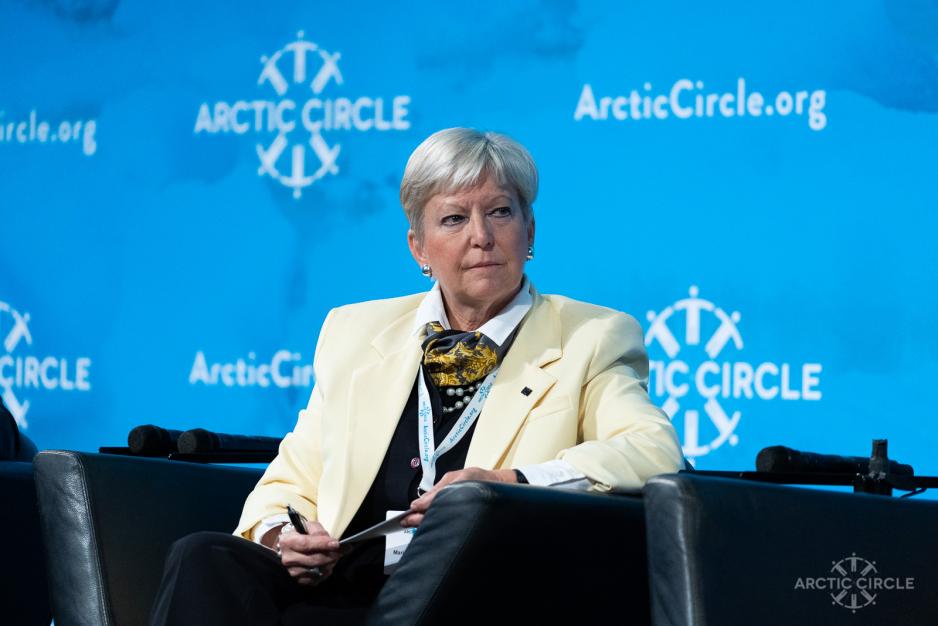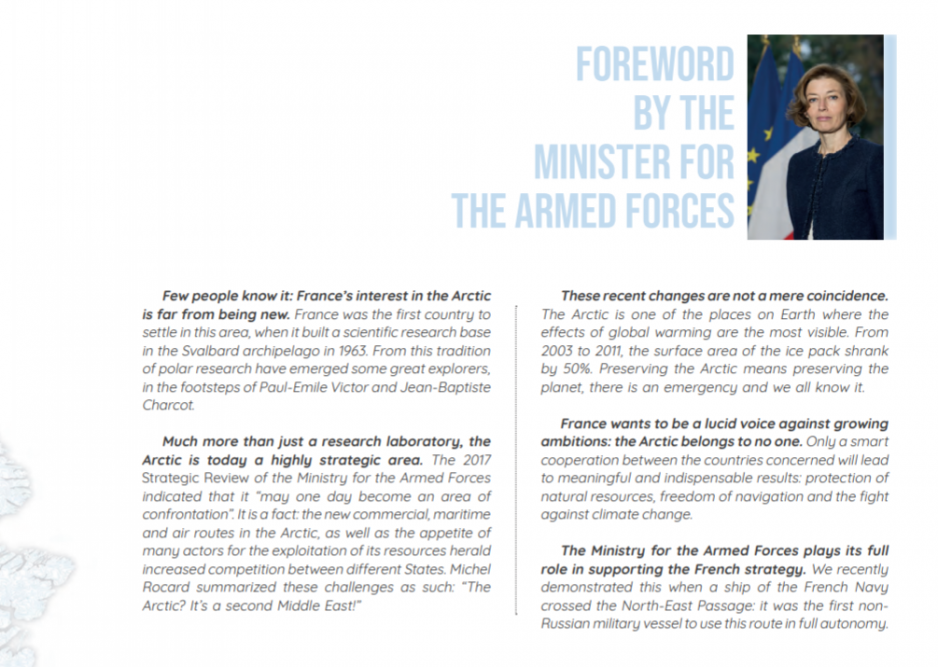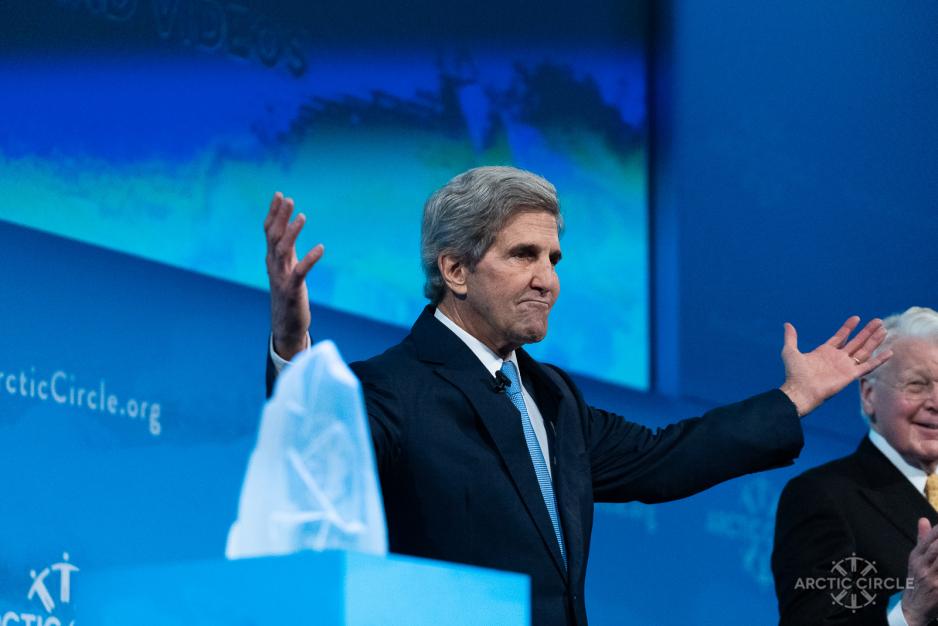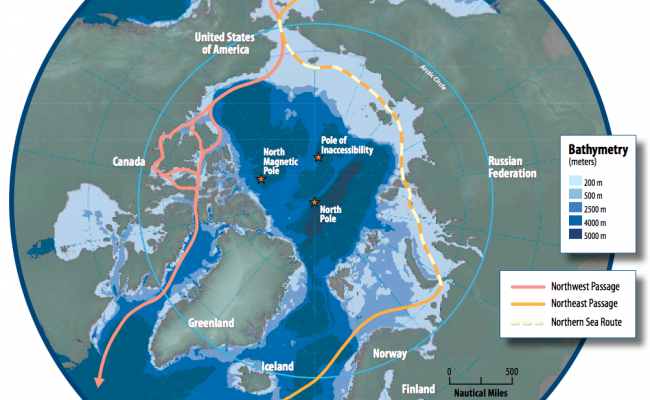Believes the EU’s New Arctic Strategy Will Include More Security and Geo-Economics

Marie-Anne Coninsx, the EU’s Ambassador at Large for the Arctic. Photo: Arctic Circle
Marie-Anne Coninsx, the EU’s Ambassador at Large for the Arctic, reveals what she believes will be the key ingredient of the EU’s upcoming Arctic Strategy: - You cannot put up a “Do not disturb”-sign, she says.
Marie-Anne Coninsx has been the EU’s Ambassador at Large for the Arctic since 2017 and is to leave office in just a few weeks. It will thus be her successor who gets the main responsibility for following up the updating of the EU’s Arctic Strategy.
Coninsx, who will remembered as an engaged, interested and most present Ambassador, nevertheless has clear expectations as to what the new strategy should contain.
She quotes the Finnish PM Antti Rinne: “There should be more EU in the Arctic and more Arctic in the EU, because the EU has a lot to offer the region”.
"That is my opinion too," she says to High North News.
Increasing number of strategies
As HNN has covered throughout this autumn, an increasing number of countries produce their own Arctic strategies. Many of them are EU countries and not all of them have the same priorities, which may represent a challenge when the EU is to update its Arctic Strategy?
"No, on the contrary," the EU Ambassador responds resolutely.
"I would say it’s positive that the nations have their own strategies. The EU strategy is an overall strategy because not all countries have their own. But of course we have to make sure there is consistency. And I would not say they are so different," she continues.
Coninsx refers to the brand-new Scottish strategy and the German one as examples. "There are a lot of similarities with the Euorpean. We must keep in mind that it is just natural for Germany, which is the biggest contributor to research in the Arctic Council, to have this as a priority area."
Also read
Time for an update
It has only been three years since the EU adopted its first Artic strategy, but so much has happened in the region since then that it is time for an update, Coninsx argues.
The formal work will only commence once the new EU Commission assumes office on November 1.
"My personal opinion is that the new EU Arctic policy’s three pillars will remain. Climate change, protecting the environment, sustainable development. However, what the current policy does not address is the geo-economic development implications," she says and elaborates: "The EU is not a “near-Arctic” state. The EU is in the Arctic. What is happening in the Arctic will have major implications on key European union sectors like energy, shipping, and mining."
Must talk about security
However, the biggest change between the current and the upcoming EU strategy will be in security.
"In the EU’s global strategy, we have stated that we want the Arctic to remain a low tension area, based on solid political security cooperation. In order to make that happen, we must talk together. Some of the discussions here in Reykjavik have focused on opening up for security policy discussions in the Arctic Council or creating a separate body to address this. Though I do not believe we need to create new organizations; I believe those we already have will suffice," she says.
As mentioned by High North News a few weeks ago, the brand-new French defense strategy for the Arctic says that “the Arctic belongs to no-one”. In the foreword signed by Florence Parly, Minister of the Armed Forces, she also quotes former PM Michel Rocard saying that the Arctic is the new Middle East.

Facsimile from the new French Arctic strategy signed by French Defense Minister Florence Parly.
"It was not wise. That was not the best quote she could have used in the foreword," Coninsx says.
"Not taking security into account is not wise either. Even if tensions currently are low, we should not be naïve. Before 2014, there were mechanisms in place with the possibility to communicate on security, but after 2014, these are limited to the Coast Guard. That is not sufficient."
"It is actually a risk in itself, because if you do not communicate, you get suspicious and interpret everything in the worst way possible. The important thing is to talk together, and I believe there is a solution. We just have to find it."
“Do not disturb”
She adds that while the general challenges the Arctic faces are primarily the responsibility of the Arctic states, security is a different matter altogether.
"If you have a security risk, it cannot be limited to the Arctic states exclusively. This is why the EU has an active security policy. We are a global security provider. And the upcoming EU Arctic Policy will be more updated and stronger than the current , and we will be in a good position to address the challenges for all the member states," she says.
In one of the many debates about security politics in the Arctic, Coninsx said:
"You cannot put up a “do not disturb” sign in the Arctic. Many argue that the EU should engage more than what it does today. The German strategy, for instance, encourages the EU and NATO to intensify their security policy role in the region."
Wants to exploit minerals
In a speech for the history books, John Kerry, former US Secretary of State, said that there is a solution; energy policy.

Former US Secretar of State John Kerry received the Arctic Circle Award for his engagement for the Arctic. Photo: Arctic Circle
And even if Coninsx personally is not too excited about Norway’s opening up more areas for petroleum exploration, she is impressed with the green transition she sees in the Norwegian oil and gas industry.
"It is all about three things: Sustainable, sustainable, sustainable. I was in Stavanger last year and it was all about green energy. Norway has the most sustainable ways of extracting oil and gas, and that is a good thing."
As for minerals, Coninsx argues that there is a large and unexploited potential in the Arctic.
"We import almost everything we use from China, even though we have it in the European Arctic. The EU has identified 25 different minerals that are decisive for developing new technology, and most of them are located in the Arctic. Is it not better that we extract minerals from our own areas senuring that it is done in a sustainable way instead of importing it from places where we know it is done in less sustainable ways?" she asks.
Impressed by Mo I Rana, Norway
She points to Mo Industry Park in Norway as an example to follow.
"I visited Mo I Rana, and I was impressed by what they have done. They recycle steel, provide energy for the community, and have special measures to attract and keep young families. It’s really a good example of circular economy."
So no national park in the Arctic?
"The answer is no. That is not a solution. We have four million people living in the Arctic. I would propose the person who asked this to go visit north of the Arctic Circle," she says in closing.
This article was originally published in Norwegian and has been translated by HNN's Elisabeth Bergquist.


